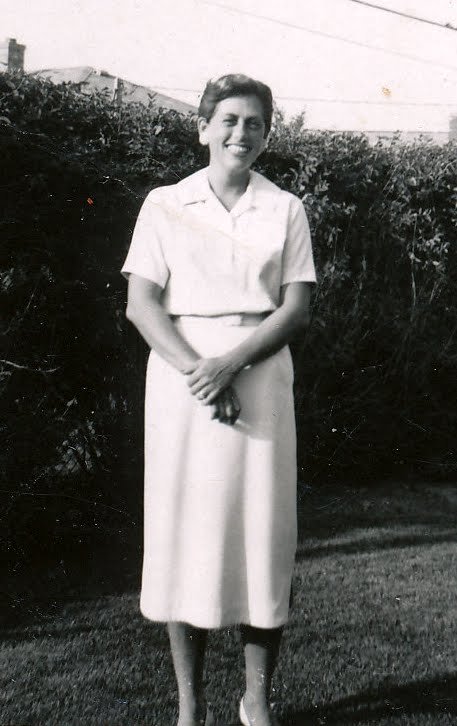Full Circle
My mother’s childhood was comprised of stories of instability. Raised by unreliable and unavailable parents in a broken home, she learned to fend for herself. Yet within the chaos was a constant: her art. Art became her refuge, voice, and expression of deep pain and longing. I can imagine her as a young girl, with brown curly hair, large brown eyes, and a pencil in hand, sketching figures in the margins of notebooks—images that carried her away from her inner turmoil.
She dreamed of art school, one day learning the techniques of the masters she admired—Picasso, Miro, and Dali. Yet, her parents were too distracted to support her talent. Her father, disconnected with a new family in California, and her mother, caught up in her anxiety and struggles in St. Louis, didn’t see what I now know as an artist on the cusp of finding her creative voice.
By the time she was twenty-one, she’d married my father. I came along three years later, and my brother three years after that. The dreams of art school faded into the background, replaced by the responsibilities of raising a family. In the 1950s, the expectations for homemakers were rigid. She did not express her dreams of having a career or self-actualization. Yet the desire to create never left her. It lingered in quiet moments.
Our basement became her studio—a damp, lit space filled with canvases, tiles, and jars of pastels. I remember wandering downstairs as a scared child: the spider webs, a creaky washing machine, a dryer, and damp and musty air. The scent of old books and art supplies mingled together. Among my father’s stacks of science fiction books, I would peek at her sketchbooks—filled with bold, abstract shapes and landscapes that seemed worlds away from our suburban home.
Having no talent as an artist, even with an array of Venus Paradise coloring kits, she became more of an enigma to me. As cocktail hour rang its loud bell in our neighborhood, the loving mom of my mornings became someone darker.
Yet throughout the years, my mother’s creativity entered every corner of our house. Mosaic-topped tables, oil paintings, and intricate pastel drawings adorned the walls. Some were pleasant and ethereal, and some disturbed me. These pieces were not just decoration; they represented pieces of her soul, glimpses of the dreams she’d put on hold and how she felt about that.
Life was not always kind. She struggled with past and present disappointments and losses as the years went on. And yet, the creative spirit within her refused to be silenced. In her late seventies, when the first signs of Alzheimer’s began to show, a new chapter in her artistic journey began.
She started attending sculpting classes at a local park district. I can still picture her clay-streaked hands shaping busts and figures with a focus that was the exact opposite of the confusion that was taking hold of her mind. The day of her art show remains etched in my memory. Her joy and excitement were evident as we sat at my computer, creating name tags for each piece.
She named one sculpture, a bust with a thick mustache and thoughtful eyes, Ceasar. Another, a slender figure with an elongated neck, she called Elinor after a beloved friend. Also, she produced a miniature likeness of Ernest Hemingway, which she made for me. It was her way of acknowledging my dreams of writing.
Seeing her at that art show, surrounded by her work, I realized she was not a woman grappling with a disease for those few hours. She was the artist she’d always been. Her joy was contagious, and the visitors complimented her work. At that moment, she wasn’t defined by what she had lost but by what she could still create.
Reflecting on my mother’s life and her journey as an artist, I often wonder: what stories lie dormant in each of us, waiting to be told? What dreams are buried under the weight of expectations or setbacks? Perhaps there is a story of your family’s struggles and triumphs. Or maybe it’s the tale of how you built your business from nothing, your passions and values guiding you forward.
The truth is every story—whether it’s personal or professional—is worth telling. Just as my mother’s art captured the complexity of her life, your story, no matter how ordinary or extraordinary, can be a gift to others. Writing is a way of remembering who we are and what we have been through and creating a legacy that speaks beyond the confines of time.
My focus is to help people like you find and share their stories. As a ghostwriter, I witness firsthand the power of storytelling to connect, inspire, and even heal. Whether it’s for a family memoir, a business history, or to reflect on what you have achieved, your story can be a beacon for those who follow.
Don’t wait for the perfect moment to begin. First, jot down your thoughts, sketch out memories, and let the words flow. When we share our stories, we remind the world—and ourselves—that our experiences matter.


